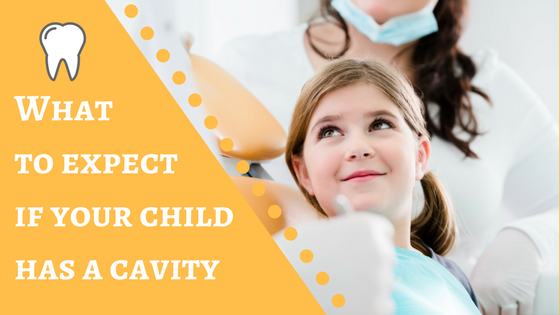
What to expect if your child has a cavity
- 0 Comments
- February 17, 2017
- by Generations Dental
- Cavity, Dental Anxiety, Filling, First Cavity, First Dental Visit, Kid's Cavity, Pediatric Dentistry,
- Leave a comment
Your child has a cavity. Now what?
“My son says his tooth doesn’t hurt and I don’t see anything wrong with it. Maybe I can just wait until it bothers him. It is just a baby tooth after all.”
It is normal for parents to be a little nervous if they find out their child has a cavity. As dentists, we often hear comments like the one above. Parents worry that a filling may be traumatic or painful for their child and they want to delay or avoid treatment if possible. However, there are many reasons why it is important to save baby teeth and why it is important to treat a tooth sooner than later. Check out our blog post on the importance of baby teeth for more information on the essential roll they play in function and development.
Why is treatment necessary?
If your dentist has told you that your child has a cavity and they recommend treating it, you can rest assured that it is a good idea to follow through. If a cavity is really small and just exists in the outer layer of the tooth, sometimes treatment can be delayed to either wait and see if the cavity is still actively growing or to let your child get a little older and more comfortable with dental care. Your dentist will let you know if this is the case. In most cases, treatment is recommended as soon as possible.
Primary (baby) teeth have a different shape and structure than permanent (adult) teeth. The center of the tooth, that houses the nerve and blood supply, is larger and closer to the surface in a baby tooth than in an adult tooth. This means that a cavity can cause some severe damage to a primary tooth, faster than it can in a permanent tooth. Also, children don’t often sense any tooth pain or discomfort due to a cavity until it is very large or catching food. Due to their shape, primary teeth also don’t do as well with large fillings as permanent teeth. If a cavity touches more than two sides of a baby tooth, it is often recommended that a silver crown be placed to protect the tooth rather than a filling, which is likely to fall out. A dentist will make a recommendation for treatment based on the size of the cavity they see. They will choose the least invasive option, considering the child’s age, the size of the cavity, and how at risk the child is for future cavities. At Generations Dental, we always recommend the treatment that has a child’s best interest at hand. We will discuss all of the treatment options available with the parent(s) and decide together what treatment option will be best for their child.
How should I prepare my child for their dental visit?
We recommend that parents never prepare their child for dental treatment with threats (“If you don’t behave they will pull your tooth out”) or scary language (“Shots,” “drills,” etc.). This sets up a child to be fearful before they even get to the dental office. Just let them know they are going to the dentist to have their tooth cleaned or to have the sugar bugs washed away. Your dentist knows how to explain things in a way that is truthful and informative yet non-threatening. Some children do benefit from clear expectations. In this case, role playing or imaginative play can be helpful. Play “Dentist” with your child. Take turns being the dentist and the patient or using a stuffed animal or doll as a patient. You can count teeth with a Popsicle stick, work on brushing sugar bugs with the toothbrush while laying down, and pretend to rinse and use the “straw” to suck up the water. Reading books about dental visits can also be helpful. There are many books out there from Dora, to Curious George, to the Berenstain Bears that can help a child learn what to expect at the dental office.
What should I expect during my child’s dental treatment visit?
When your child comes for their appointment, the dentist or the assistant will confirm the planned treatment for that day. They will then bring the child to the treatment room. Sometimes parents are welcome into the treatment room for the duration of the appointment and sometimes they are not. This is something you should discuss with your dentist ahead of time. The decision to have a parent present may depend on the age of the patient, the anxiety level of the patient, the anxiety level of the parent, and how well the child behaves in front of the parent. Parents can provide comfort and reassurance for their children. However, some children do not do as well with a parent in the room. They may struggle to know who is in charge of what is going on and use the parent as a stall tactic or to try and leverage their way out of treatment. In other instances, a parent may be anxious, due to their own dental fears, and this can make their child more anxious as well. You and your dentist can discuss what is best for ensuring the best treatment occurs while keeping you and your child comfortable. Even if you are not allowed back the whole time, you will often be invited for a “peek-a-boo” check to ease your fears without distracting your child.
Once your child is brought back, the dentist and staff members will explain the planned procedure to them in kid friendly terms while showing them some of the tools they plan on using. This puts the child at ease and helps set expectations. At Generations Dental, we offer TV Goggles and will offer these to the patient and get them situated with their favorite channel and volume. TV goggles are a drug free means to allow for patients to hear the dentist and respond to questions, while offering a distraction from the procedure at hand. They work extremely well for pediatric patients. After your child is situated, the treatment will begin. If anesthetic is necessary, numbing jelly will be placed to reduce or eliminate the sensation of a “poke.” Your dentist will continue to check on your child’s comfort level throughout the procedure and will use descriptors of the next steps as necessary. Once the procedure is complete, your child can pick out a prize if they did a good job listening and helping out during the appointment. The dentist will review any post treatment recommendations and you will be free to schedule your next visit and enjoy your day.
Remember, we always want treatment to be as pleasant as possible. Feel free to ask questions and state any concerns you have, so that your dentist can help put your fears at ease. Our Generations Dental team strives to work with you to create the best treatment plan for the needs of everyone involved. Our care is always custom and never cookie cutter.
